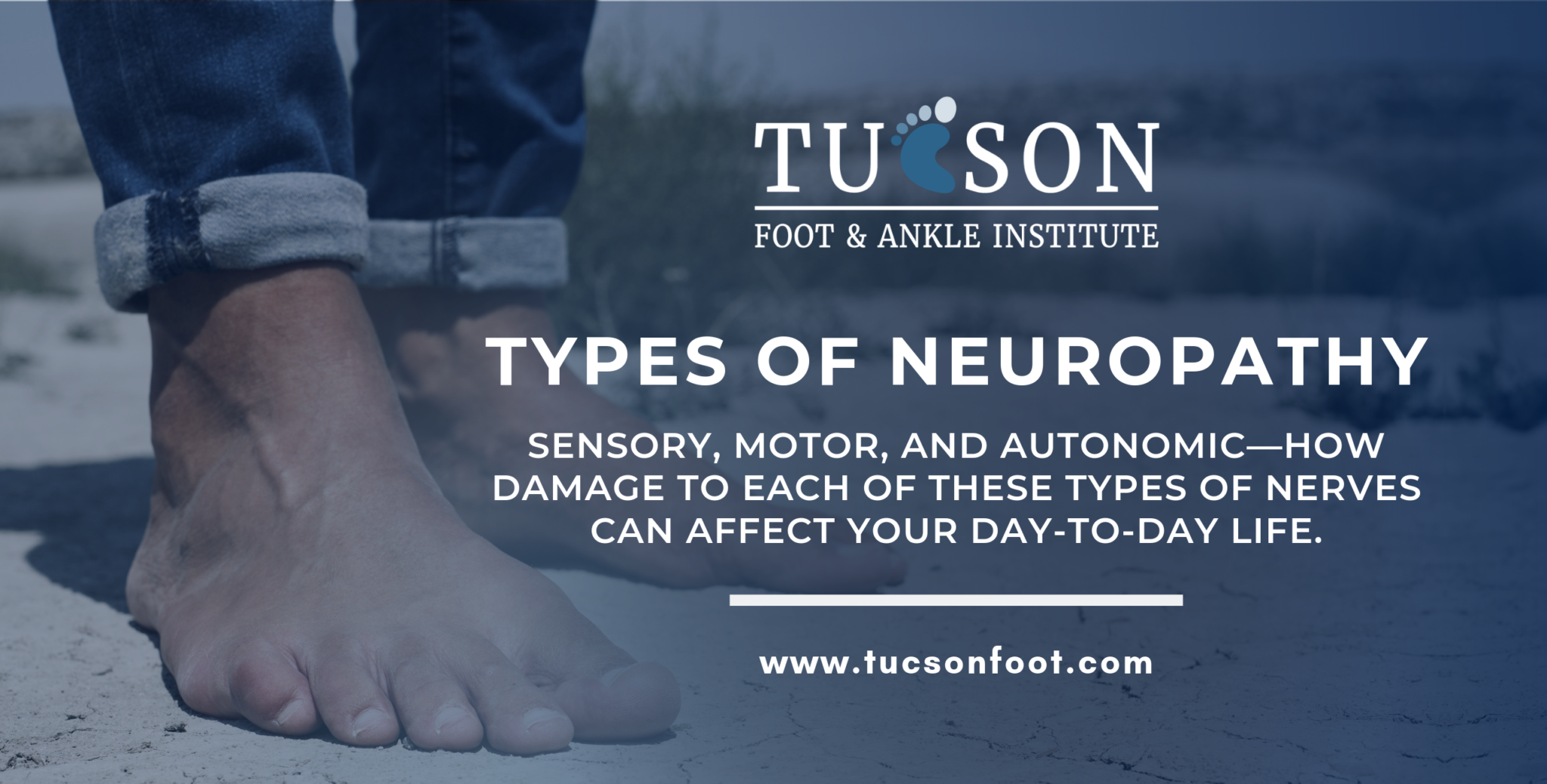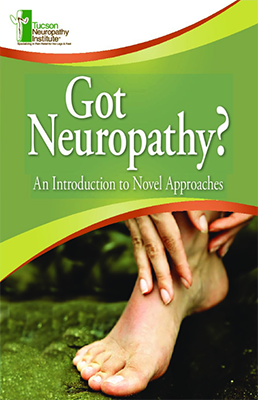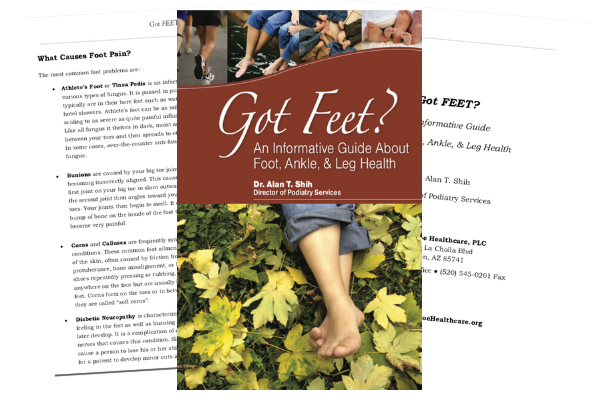Sensory, Motor, Autonomic—Breaking Down the Types of Neuropathy
We often talk about “peripheral neuropathy” as if it were a single condition, targeting a single area with a consistent set of symptoms.
That certainly does make things simpler and easier to understand. And in fairness, many cases of peripheral neuropathy are broadly similar between different people, and treated in similar ways. So it makes sense to simplify it a bit in order to help people understand better.
But the truth is that there are multiple conditions and variations within the realm of what we generally call “peripheral neuropathy.” They can be differentiated by cause, by number of nerves affected, location of nerves affected, the type of nerves affected—you get the idea.
Now, don’t worry—we’re not going to be dropping a research paper with a bunch of technical jargon on you, or talking about every specific type of condition. That would be insane.
Instead, what we’d like to do is talk a little bit about the three types of peripheral nerves—sensory, motor, and autonomic—and explain how damage to each of these types of nerves can affect your day-to-day life.
Peripheral Neuropathy and Sensory Nerves
Sensory nerves are chiefly responsible for reporting sensory information from the body back to the brain.
At the far end of the system, you’ll find sensory receptors that are designed to respond to specific kinds of physical stimuli. For example, thermoreceptors respond to temperature changes, and help you determine whether you’re too hot or too cold. Meanwhile, different types of mechanoreceptors are attuned to mechanical forces like pressure, texture, or proprioception, and nociceptors are mechanoreceptors usually responsible for your perception of pain.
Those signals are transferred along sensory nerves back to the central nervous system and the brain, where they are processed and interpreted. All your senses (touch, taste, feel, vision, hearing, etc.) operate in this way.
As you can imagine, when sensory nerves are damaged or malfunctioning, a wide variety of sensory problems can emerge. Information either isn’t getting back to the brain, or is doing so in a “scrambled” form (for a lack of a better term).
Some potential symptoms include:
- “Phantom” painful sensations including burning, freezing, shocking, tingling, etc.
- Sharp, stabbing pains you can’t explain.
- Hypersensitivity
- Reduced ability to sense pain or extreme temperatures
As the sensory nerves become more and more damaged, they gradually lose the ability to communicate with the brain entirely, resulting in complete numbness of the affected area.
Peripheral Neuropathy and Motor Nerves
Motor nerves are chiefly responsible for carrying out instructions from the brain back to the body.
In other words, just about everything you do—going for a walk, climbing a ladder, picking up a glass of water, turning your head—is only possible because of motor nerves translating the commands of the central nervous system into muscle movement.
Some motor nerves are responsible for contracting muscles; others are responsible for relaxing and elongating them. As you can imagine, even relatively simple motions and maneuvers require highly intricate, coordinated action between countless muscles and motor nerves.
Damaged motor nerves may result in symptoms such as:
- Muscle weakness, atrophy, or ultimately even paralysis
- Poor balance and coordination (also a side effect of sensory neuropathy)
- Constant muscle cramps
- Involuntary spasms or twitching
Peripheral Neuropathy and Autonomic Nerves
Autonomic nerves are chiefly responsible for controlling systemic body functions that are either involuntary or semi-involuntary.
Examples of autonomic functions include your heart rate, breathing rate, blood pressure, and digestive system. Autonomic nerves also help control certain reflex actions, like coughing, sneezing, or vomiting.
Just like sensory nerves, autonomic nerves are generally connecting to a sensory nerve at one end—only instead of responding to external stimuli like touch or temperature, they respond to internal stimuli like the level of oxygen in your blood. Those signals get transmitted to the hypothalamus, which integrates the information and regulates the various connected systems.
Neuropathy that damages autonomic nerves can have a variety of far-ranging consequences, including:
- Excessive sweating
- Dizziness
- Difficulty swallowing
- Nausea
- Digestive problems
- Bowl and bladder issues
- Sexual dysfunction
Mononeuropathy, Multiple Mononeuropathy, Polyneuropathy …
Now that you know about the types of peripheral nerves, you should also know that neuropathy can affect one type or multiple types.
A mononeuropathy is a condition where only a single nerve is affected. One example would be tarsal tunnel syndrome, in which the posterior tibial nerve gets pinched at the tarsal tunnel of the ankle. Multiple mononeuropathy is simply more than one mononeuropathies in different, unrelated parts of the body—tarsal tunnel syndrome and carpal tunnel syndrome in the wrist, for example.
That said, most cases of peripheral neuropathy are polyneuropathy—a more system-wide progressive problem where multiple nerves in the same region are affected.
This may include any combination of sensory, motor, or autonomic nerves. So just because you’re beginning to notice sensory symptoms doesn’t mean you won’t eventually start dealing with neuropathy that affects motor functions and autonomic systems as well.
Whatever the Type or Cause of Your Neuropathy, We Can Help
When it comes to treating all kinds of peripheral neuropathy, the Tucson Foot & Ankle Institute is on the cutting edge.
Dr. Alan Shih is a peripheral nerve expert. He’s one of fewer than 300 physicians in the country to be trained in peripheral nerve surgery at the prestigious Dellon Institute, and uses a combination of advanced therapies (laser therapy, radiofrequency nerve ablation, etc.) to combat (and often even reverse) the effects of nerve damage.
If you believe you may be suffering from the effects of nerve damage in your feet, please call our office immediately. The sooner we get a diagnosis, the better chance you have at the best possible treatment outcome.
To contact our office, please dial (520) 545-0202 today. Or simply use our handy request form online to have one of our trained staff members reach out to you.
Free Books
Contact Us
Office Hours:
Monday - Friday
8:00AM - 5:00PM
Tucson Foot & Ankle Institute:
7406 N. La Cholla Blvd.
Tucson, AZ 85741
Phone: (520) 545-0202
Fax: (520) 545-0201
© Tucson Foot and Ankle Institute. All Rights Reserved. | Privacy Policy






